Abstract
The response of Meriones shawi to seven rodenticides was investigated in laboratory feeding tests. The species proved to be much less susceptible to anticoagulants than most other species of rodent pests. Brodifacoum (at 0.005%), although giving complete mortality after only 8 days' continuous feeding, was more toxic than warfarin (0.025%), coumatetralyl (0.0375%), difenacoum (0.005%) and bromadiolone (0.005%). Calciferol (0.1%), though toxic, was significantly unpalatable. Zinc phosphide (5.0%) presented for 2 days in a choice test against unpoisoned food gave 80% mortality and appears to be the most suitable of these compounds for the control of M. shawi in the field.
Full text
PDF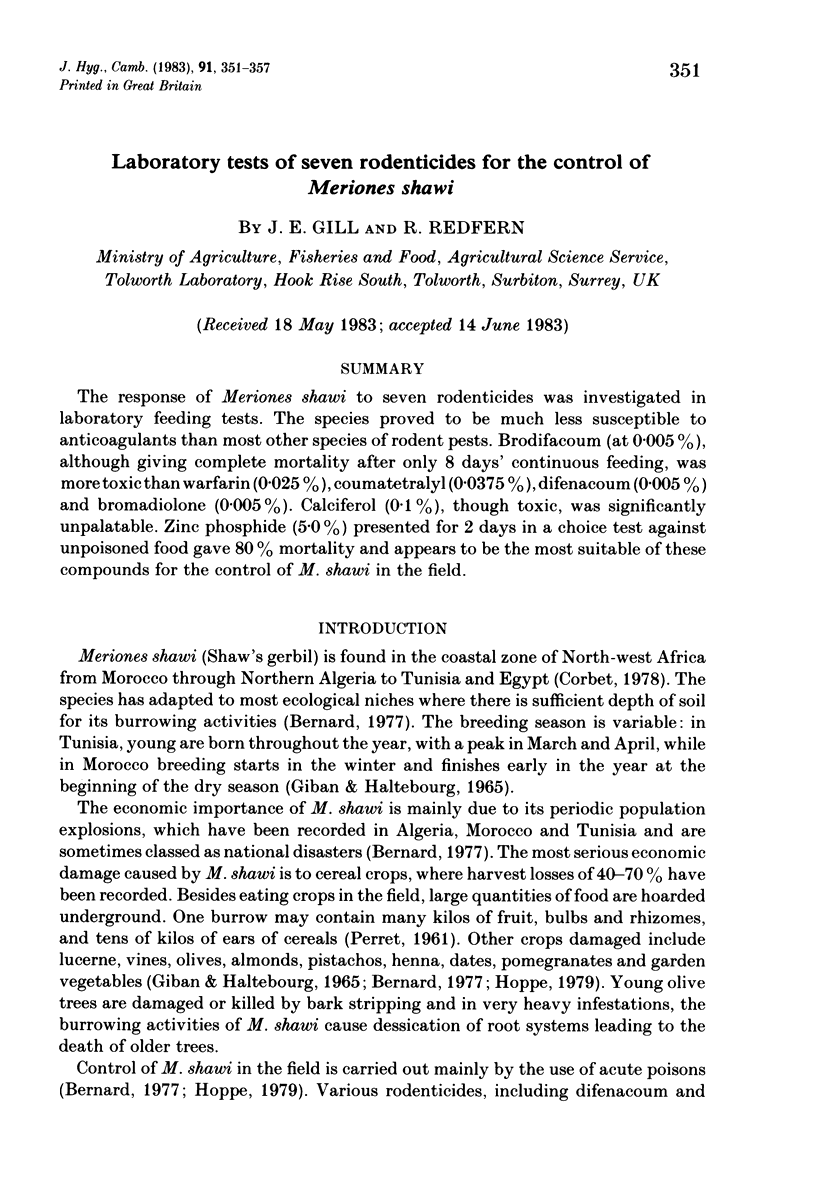
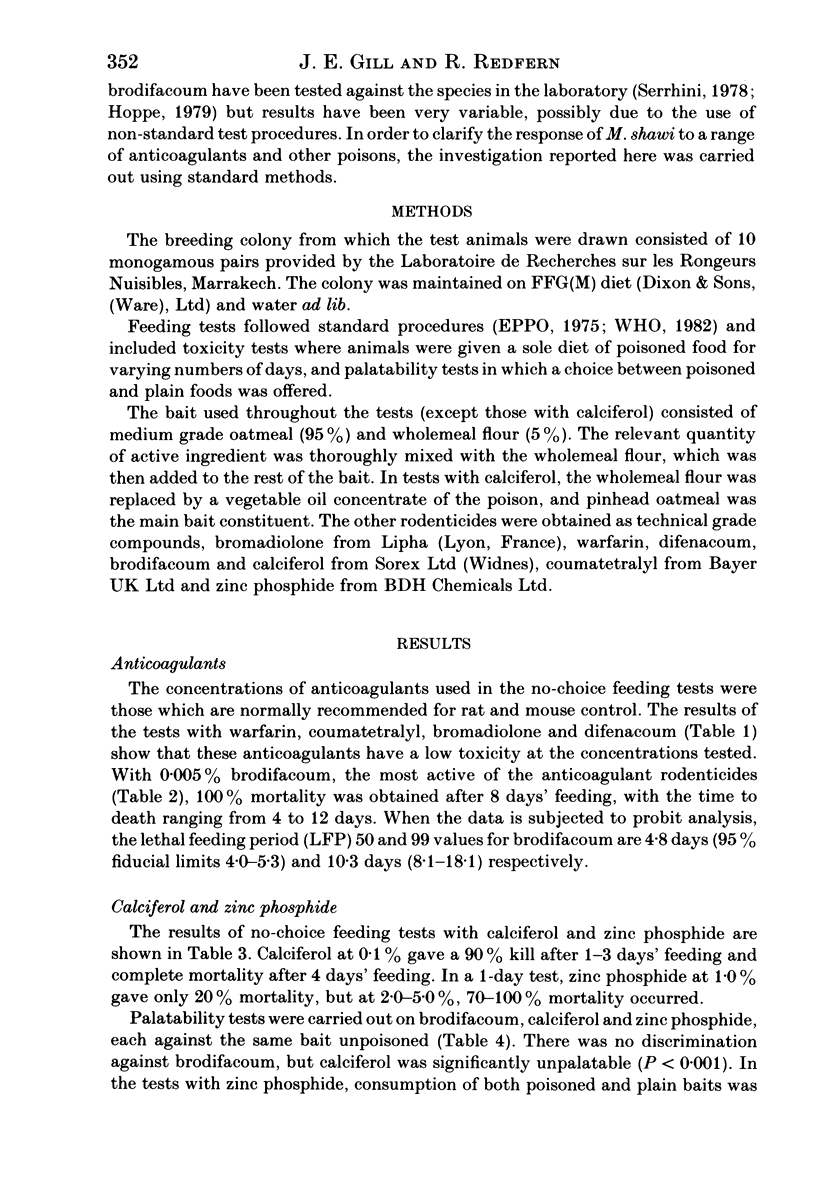
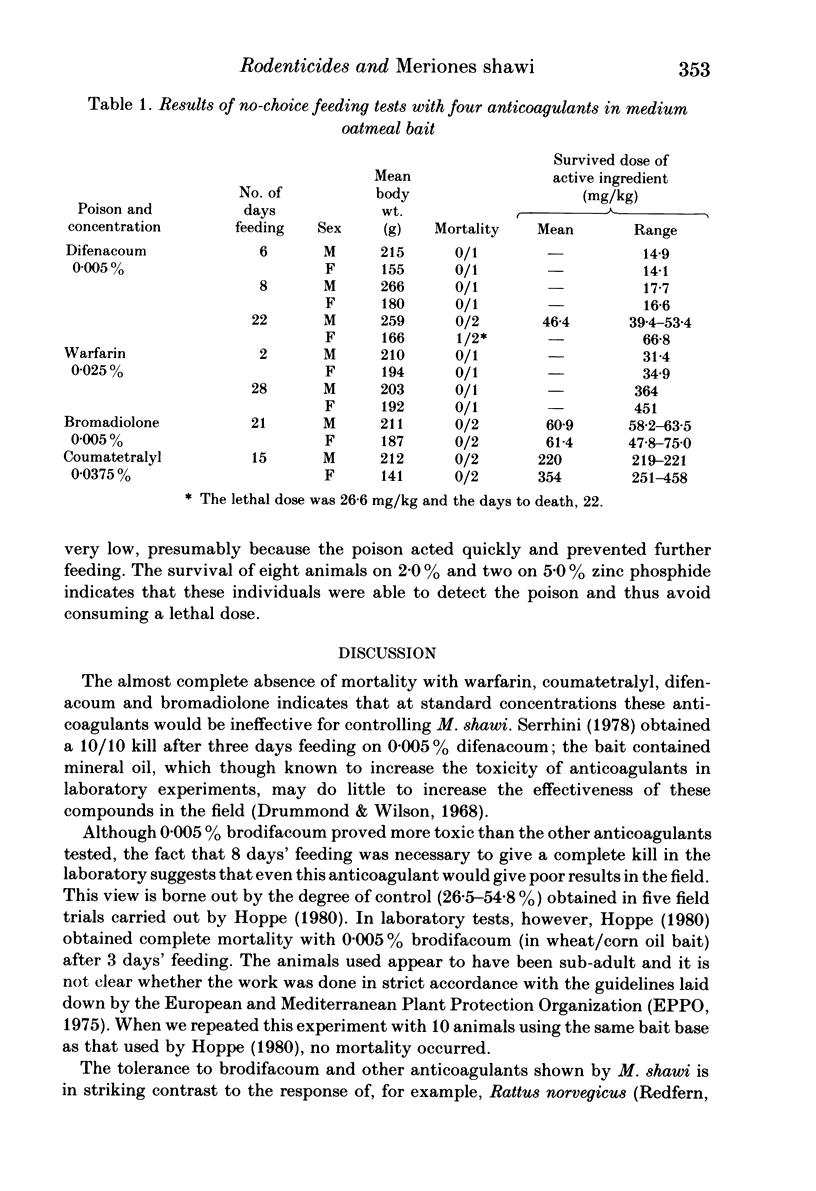
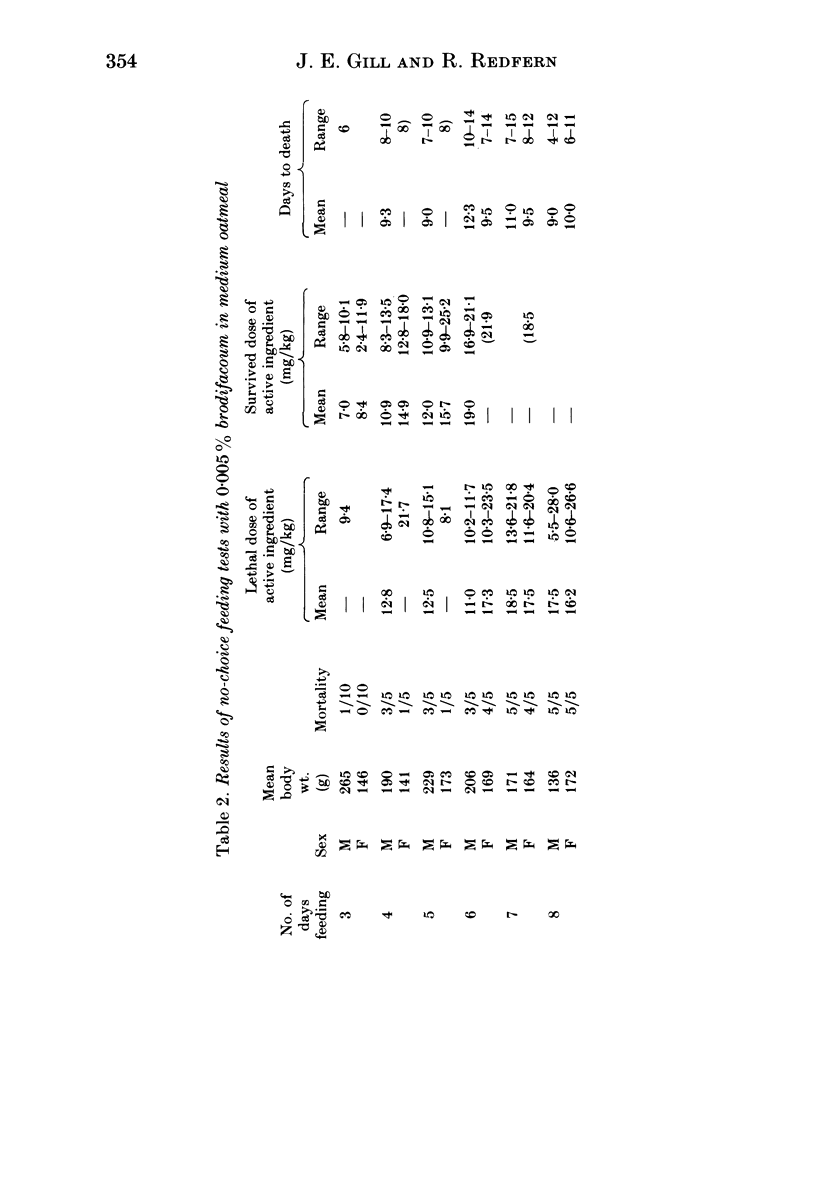
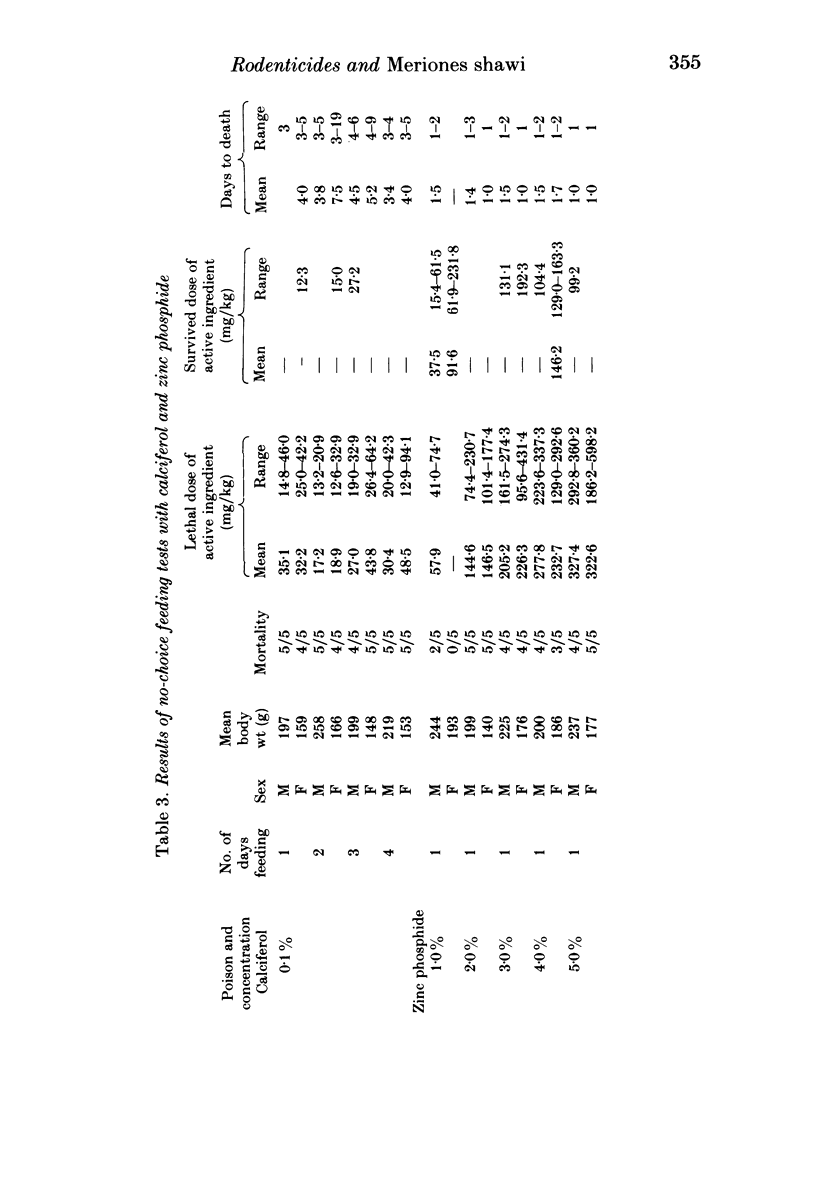
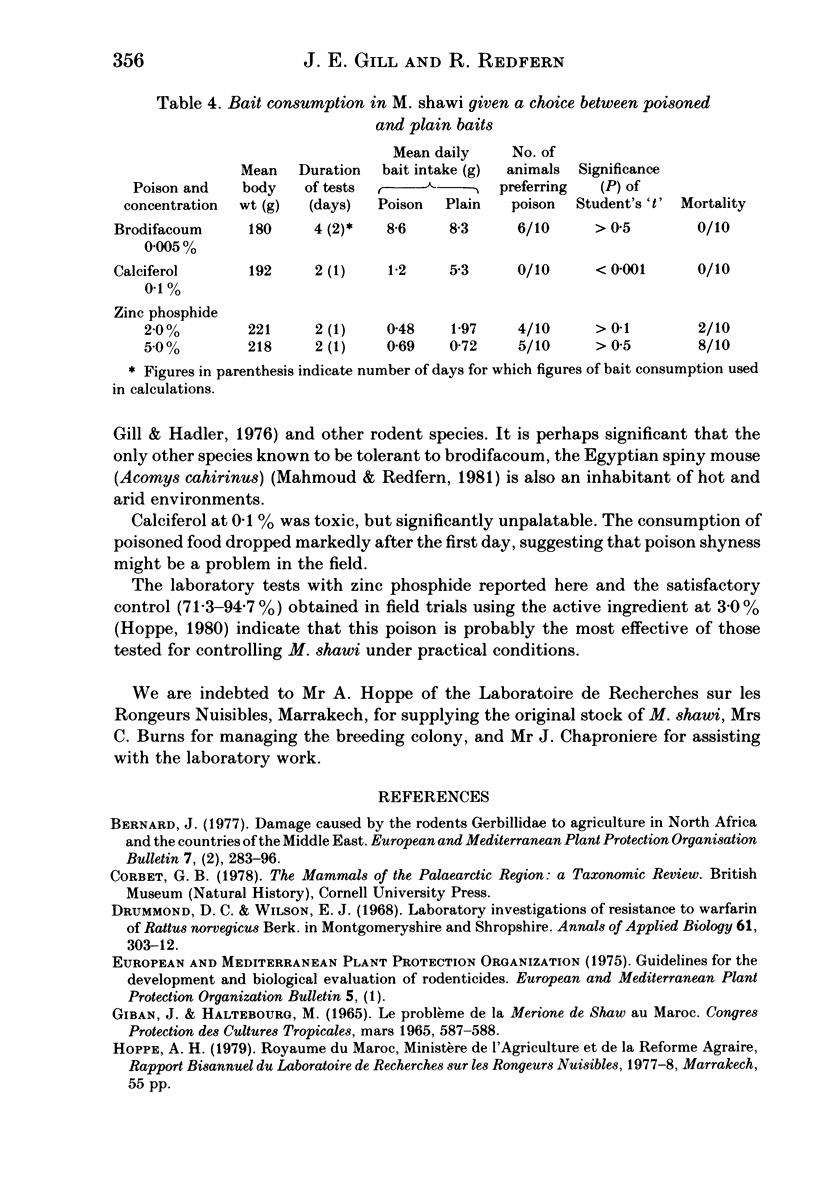
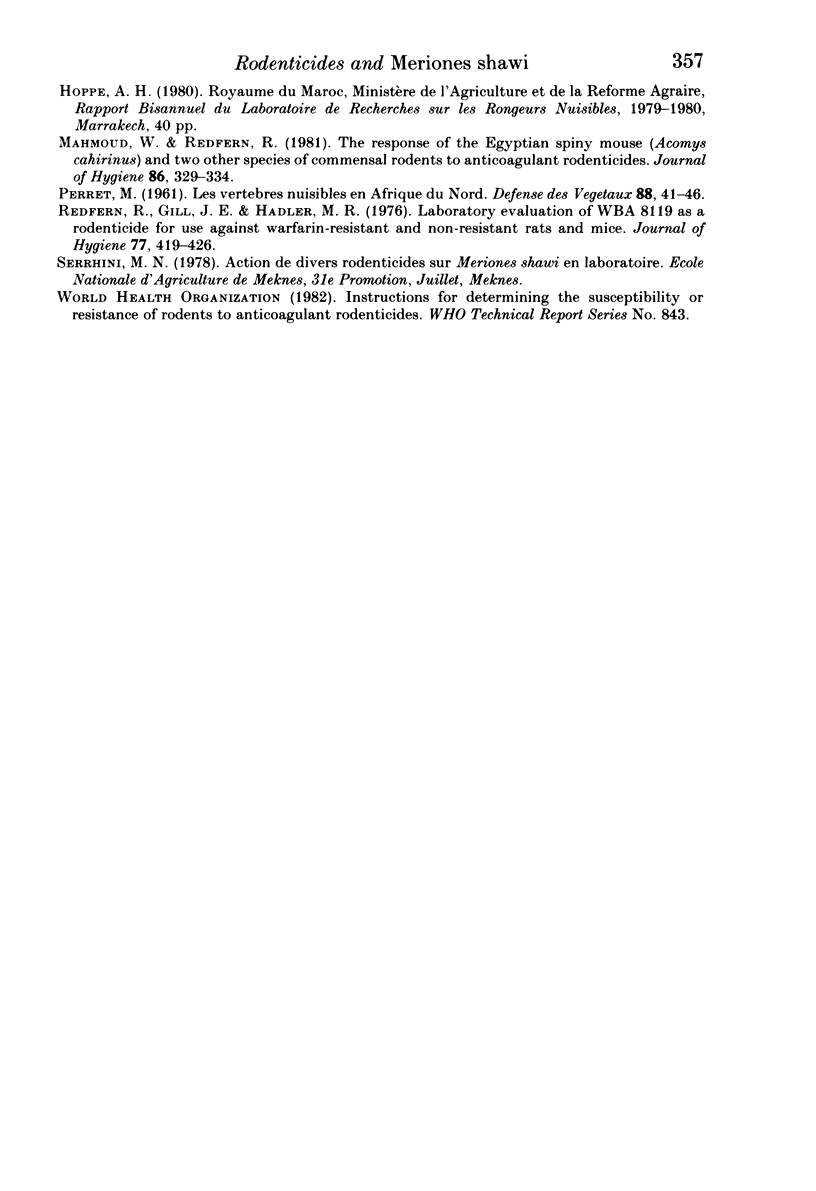
Selected References
These references are in PubMed. This may not be the complete list of references from this article.
- Drummond D. C., Wilson E. J. Laboratory investigations of resistance to warfarin of Rattus norvegicus Berk. In Montgome norvegicus Berk. in Montgomeryshire and Shropshire. Ann Appl Biol. 1968 Apr;61(2):303–312. doi: 10.1111/j.1744-7348.1968.tb04535.x. [DOI] [PubMed] [Google Scholar]
- Mahmoud W., Redfern R. The response of the Egyptian spiny mouse (Acomys cahirinus) and two other species of commensal rodents to anticoagulant rodenticides. J Hyg (Lond) 1981 Jun;86(3):329–334. doi: 10.1017/s0022172400069072. [DOI] [PMC free article] [PubMed] [Google Scholar]
- Redfern R., Gill J. E., Hadler M. R. Laboratory evaluation of WBA 8119 as a rodenticide for use against warfarin-resistant and non-resistant rats and mice. J Hyg (Lond) 1976 Dec;77(3):419–426. doi: 10.1017/s0022172400055807. [DOI] [PMC free article] [PubMed] [Google Scholar]


